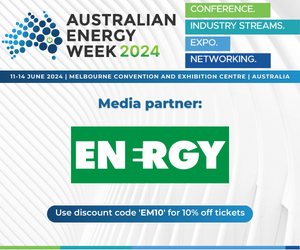by Iain Wood, CEFC Associate Director – Investment
Australia’s National Disability Insurance Scheme (NDIS) has identified significant demand for quality housing in the disability sector to cater for an estimated 28,000 Australians living with a disability. In building these new homes, factoring in sustainability thinking at the planning stage has the potential to deliver long-term benefits to tenants as well as our environment.
Australia’s built environment has a key role to play in driving down emissions, particularly given the sector accounts for almost a quarter of national greenhouse gas emissions. It’s clear that the way we build can reduce energy use and emissions.
While interest in developing high-quality housing for people living with a disability has grown significantly, the sector has the scope to extend the important benefits of sustainable housing to also improve tenants’ living standards while helping drive down Australia’s carbon emissions.
Clean energy for stronger sustainability standards
The recent first investment by the Clean Energy Finance Corporation (CEFC) into a specialist disability accommodation (SDA) platform, created and managed by Macquarie Asset Management, was a landmark development for the emerging sector, and aims high with the platform targeting carbon neutrality on an operational basis within two years of being established.
The CEFC invests to lead and accelerate Australia’s transition to a low emissions economy and create opportunities for lower-cost energy Australia-wide.
One of the key reasons for entering any new sector is to encourage participants to implement strong sustainability standards and show both the environmental and social benefits associated with clean energy technologies.
Energy efficiency and sustainability aspects for a nationwide project of this scale are essentially threefold – with thermal and energy efficiency, solar, and carbon-neutral targets being the major basis for energy sustainability goals.
Ambitious sustainability initiatives for the SDA platform include requirements that the dwellings reach a minimum average 7.5 Nationwide House Energy Rating (NatHERS) star rating by incorporating energy-efficient technology like solar PV, ensuring dwellings are fully electrified and the adoption of energy-efficient appliances.
Notwithstanding the minimum NatHERS target, the portfolio will strive to achieve a rating of eight-stars which equates to an approximate improvement of over 55 per cent when compared to a minimum six-star rated home.
Ongoing data capture is another important part of understanding how we can better track residual emissions and how to continue to improve.
Passive design and energy efficiency technologies are also easy first steps towards making a sustainable home. Incorporating high-performing glass, insulated floors, walls and ceilings, window shading, energy-efficient air conditioning, ceiling fans, and solar panels are also considerations in improving energy efficiency.
Energy-efficient air conditioning devices, the installation of in-home real time energy monitoring systems as well as energy-efficient appliances – like induction cooktops for example might be considered low-hanging fruit but can make a real difference in energy usage.
Costs and comfort
Generally, the cost of incorporating these types of energy-efficient technologies and design into buildings accounts for around 1 per cent of capex, providing that energy efficiency is incorporated early in the design process.
We are seeing preliminary results that suggest that these costs will continue to be driven down, meaning it will be more achievable to implement across all types of building developments.
Having a thermally stable environment keeps the temperature at a constant, making for a more comfortable living environment and offsetting large fluctuations in energy in order to heat and cool homes.
This delivers lower energy bills and, of course, improves homeowner comfort. It’s a consideration that is particularly significant for people living with a disability.
A recent Australian Council of Social Services report highlighted the range of barriers that exist to improving energy efficiency and access to energy-efficient technologies around the home among financially disadvantaged Australians, including tenants1.
Lower energy costs are obviously important for everyone but especially for these tenants given they are more likely to spend a significant amount of time in the home.
Energy-intensive devices for medical treatment may also be in use, adding to energy costs, which is a major factor considering that for the main source of income for disability tenants may be through the national disability payments scheme or through some other form of pension payment.
Australia’s solar advantage
Capitalising on our natural advantages, Australia has one of the highest uptake rates of solar panels around the world, with installation at around 30 per cent of homes2.
The SDA homes are aiming to provide a minimum of 5kW of solar panels for each dwelling subject to technical feasibility. Australia’s enthusiasm for solar has yet to translate to a large-scale uptake in-home battery storage, with cost being one of the main barriers.
In an interesting instance of the disability housing framework aligning with sustainability ideals, battery usage in SDA homes is not uncommon as having a backup energy supply for life-saving technology for disabled tenants and can be used in case of a grid blackout.
While the life-saving batteries in SDA may not yet be sustainably powered, their presence shows that capacity can be built in from the start and that an existing level of compatibility serves as a foundation that can be strengthened.
The role of VPPs
In the long term, for projects on this scale, there is scope to consider harnessing stored energy into a private virtual power plant (VPP).
The use of community batteries in this type of scenario allows households that generate their own solar power to pool their excess electricity in shared storage for later use can cut energy costs and reduce carbon emissions.
The CEFC has previously worked to deliver home energy systems that created one of the country’s largest VPP in South Australia – a combination of solar and battery systems allows excess energy from solar to be available for sale to the National Electricity Market, potentially providing wholesale energy and ancillary services to support a low emissions energy grid.
There is scope for growth in VPPs with the Australian Energy Market Operator having forecasted that rooftop solar could provide 22 per cent of Australia’s total energy by 20403 , providing as much as 30GW of energy.
An increase of this scale could pave the way for VPPs to make a significant contribution to the nation in providing a lower cost and low emissions energy system.
More immediately, it is hoped that when disability service providers see the benefits for their clients that come from incorporating sustainability considerations into their building design they can look to this SDA investment as evidence for what can be achieved to increase comfort around the home, lower energy costs and improve living standards.


















